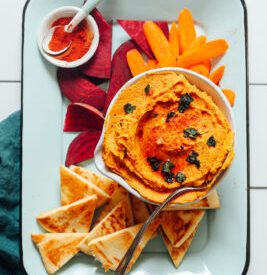Do you feel it? That tiny twinge of fall that’s already in the air—its barely-there fragrance on my morning walks around the neighborhood, the twinge of excitement I feel when I think about pumpkin recipes, soft sweaters, cozy candles , and sweet relief from the intense heat of a […]
Delicious!
Delicious!



